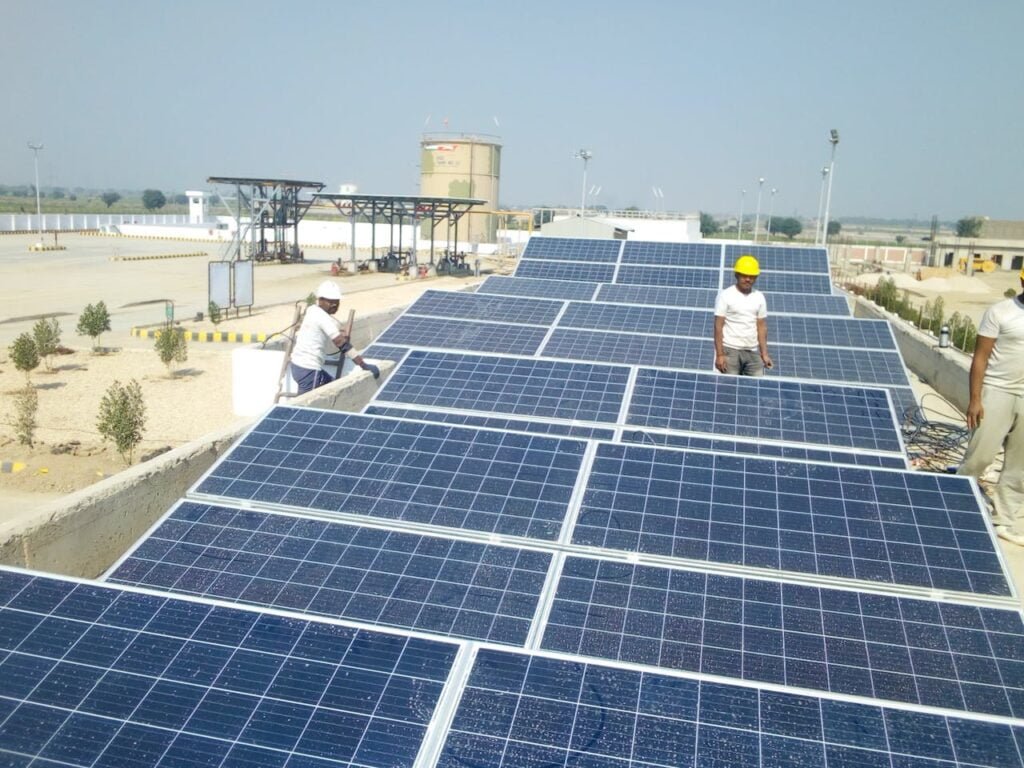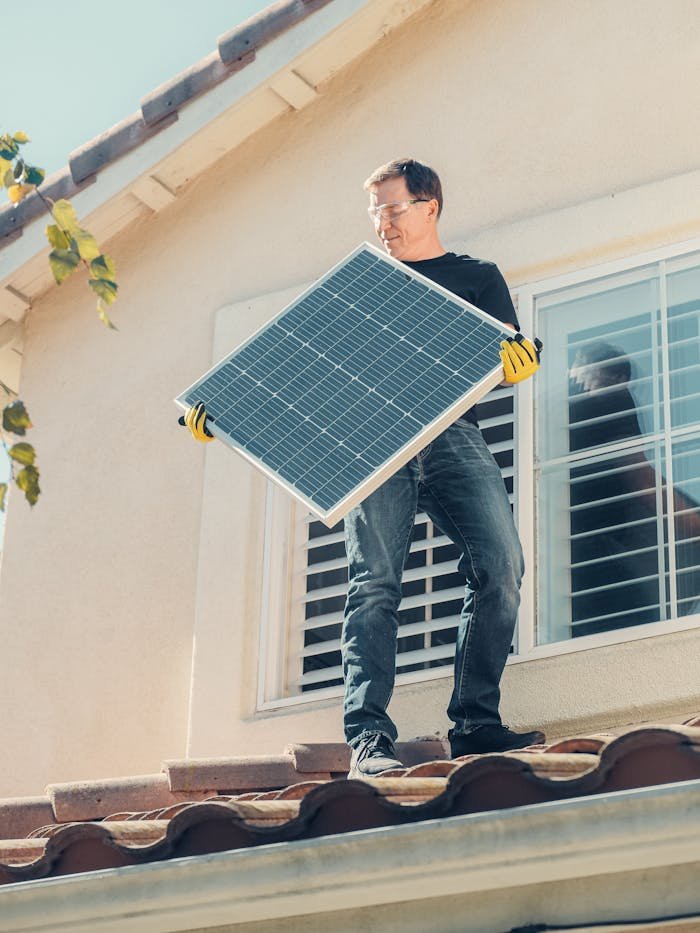If you’re in Chandler and thinking about adding a battery storage system to your home, you’re making a smart decision. With the amount of sunshine here, it’s a great idea to take full advantage of it. While getting a setup to harness the sun’s power is a great first step, adding a battery can really take your independence to the next level.
So, what’s the deal with storing extra power? Why should you bother, and more importantly, which option fits you best? Let’s break it down, especially for those of us living in Chandler.
Why Consider Storing Extra Power?
Before we get into the details, let’s talk about why having a system to store excess power might be a wise move.
Independence from the Grid
By storing extra power, you can use it when the supply is low, making you less dependent on the grid. This can be especially helpful during outages or if you’re looking to lower your electricity costs.
Save During Peak Hours
In Chandler, like many places, utility rates tend to climb during peak hours. By using stored power at those times, you can avoid paying those higher rates.
Environmental Perks
Using more of the power you generate helps reduce your carbon footprint—a small step that makes a big difference for the environment.
Boost Your Home’s Value
Homes with efficient features are often more appealing to buyers. A storage system can make your home stand out by providing improved efficiency and sustainability.
Options for Energy Storage Available
Now that you’re on board with storing that solar energy, let’s dive into the different options out there. Not all batteries are the same, so it’s key to pick the one that fits what you’re looking for.
1. Tesla Powerwall
The Tesla Powerwall is one of the most popular home batteries, and for good reason. It boasts a sleek design, powerful performance, and advanced technology.
Pros:
- High Capacity: The Powerwall offers a 13.5 kWh capacity, which is enough to power most homes through the night.
- Scalability: You can stack up to 10 Powerwalls if you need more storage.
- Reliable Brand: Tesla is a trusted name in the energy world.
Cons:
- Cost: The Powerwall is on the pricier side.
- Availability: Tesla’s popularity means there can be a wait time to get your hands on one.
Is it right for you? If you’re looking for a reliable, high-capacity battery and don’t mind spending a bit more, the Tesla Powerwall is a solid choice. It’s perfect for those who want to be on the cutting edge of technology and appreciate a sleek, modern design.
2. LG Chem RESU
LG Chem is another big name in the battery world, and their RESU (Residential Energy Storage Unit) series is a popular option for homeowners.
Pros:
- Compact Size: The RESU is smaller than some other options, making it easier to fit in your garage or utility room.
- Good Capacity: With options ranging from 6.5 kWh to 16 kWh, there’s a RESU battery for most homes.
- Durability: LG Chem batteries are known for their long lifespan and reliability.
Cons:
- Limited Availability: Depending on your location and installer, the LG Chem RESU might not be as readily available as other options.
Is it right for you? The LG Chem RESU is a great choice if you’re looking for a compact, reliable battery that won’t break the bank. It’s ideal for homeowners who need a mid-range capacity and value durability.
3. Enphase Encharge
Enphase is known for its microinverters, but they’ve also made a name in the battery storage world with their Encharge series.
Pros:
- Modular Design: Encharge batteries are modular, meaning you can add more units as needed.
- Integration with Enphase Microinverters: If you already have Enphase microinverters, the Encharge system will integrate seamlessly.
- Advanced Monitoring: The app offers detailed insights into your system’s production and usage, giving you a clear view of how it’s performing.
Cons:
- Lower Capacity per Unit: Each Encharge unit has a lower capacity compared to other brands, so you might need more units for the same storage.
Is it right for you? If you already have or are planning to use Enphase microinverters, the Encharge system is a no-brainer. It’s also a good option for those who value detailed monitoring and a modular system that can grow with your needs.
4. Sonnen Eco
Sonnen is a German company that’s been making waves in the U.S. with their eco-friendly, community-driven approach to power storage.
Pros:
- Eco-Friendly: Sonnen batteries are designed with sustainability in mind, using non-toxic, recyclable materials.
- Energy Sharing: Sonnen offers the option to join a virtual power plant, where you can share energy with your neighbors.
- Durability: Known for their long lifespan and reliability.
Cons:
- Cost: Sonnen batteries are on the higher end of the price spectrum.
- Less Availability: Sonnen isn’t as widely available as some other brands, so finding an installer might be a bit harder.
Is it the right choice for you? If you’re passionate about sustainability and want a battery that aligns with those values, the Sonnen Eco is an excellent option. It’s also perfect for anyone interested in community sharing and advanced technology.
5. BYD B-Box
BYD, which stands for “Build Your Dreams,” is a Chinese company that’s really making waves with their B-Box series. They’re shaking up the solar battery scene and offering some serious innovation.
Pros:
- Scalability: The B-Box is modular, allowing you to scale up your system as needed.
- Affordability: BYD offers a more budget-friendly option without sacrificing too much on quality.
- Good Performance: Known for consistent performance and reliability.
Cons:
- Less Brand Recognition: BYD isn’t as well-known in the U.S., so you might need to do a bit more research before committing.
Is it right for you? If you’re looking for a scalable, affordable option and don’t mind going with a less recognized brand, the BYD B-Box could be a good fit. It’s ideal for those who want to start small and expand their system over time.

Key Tips for Choosing an Energy Storage Solution
Picking the right energy storage for your home isn’t just about choosing a brand; you’ve got to think about a few key things.
1. Capacity
The capacity of a battery is measured in kilowatt-hours (kWh) and indicates how much it can store. To figure out the right capacity, you’ll need to calculate how much you use. If you’re planning to rely on the battery for power during the night, you’ll want one with a higher capacity. On the other hand, if it’s just for offsetting peak usage times, a smaller one may do the job.
2. Cycle Life
A battery’s cycle life refers to how many times it can be charged and discharged before it starts to lose efficiency. A longer cycle life means your battery will last longer and provide more value over its lifetime.
3. Depth of Discharge (DoD)
The DoD is the percentage of the battery’s capacity that can be used before it needs to be recharged. Batteries with a higher DoD allow you to use more of the battery’s capacity, which can be more efficient and cost-effective.
4. Warranty
Always check the warranty when selecting a battery. Reliable brands typically offer coverage for 10 years or more, protecting against defects or early wear.
5. Integration with Existing Systems
If you already have a system installed, ensure the battery you choose is compatible with your setup. Some batteries pair better with specific inverters or brands, so thorough research is key.
6. Cost
While it’s important to consider the upfront cost of the battery, don’t forget to factor in the long-term savings. A more expensive battery with a longer lifespan and higher efficiency might save you more money in the long run.
The Installation Process
Once you’ve chosen the ideal system for your needs, the next step is installation. Here’s what to expect:
Site Assessment
Your installer will evaluate your home to find the ideal spot for the battery, typically in a garage, basement, or utility room for easy connection.
Permitting and Paperwork
In Chandler, you’ll need to get the necessary permits before installation. Your installer should handle this process for you, but it’s a good idea to ask about it upfront.
Installation Day
On installation day, the installer will set up the battery and connect it to your existing system. The process typically takes a few hours, depending on the setup’s complexity.
Testing and Commissioning
After installation, the system will be tested to ensure everything is working correctly. The installer will walk you through how to monitor your battery and answer any questions you have.
Ongoing Maintenance
These batteries need little upkeep, but periodic checks help ensure optimal performance.
Maximizing Your Solar Battery’s Potential
Once your setup is up and running, there are ways to maximize its efficiency and savings.
Monitor Your Usage
Use the monitoring app provided by your system manufacturer to track production and usage. This will help you make adjustments for maximum efficiency.
Time Your Usage
Run power-hungry appliances during the day to take advantage of the available resources, storing more for use during peak hours or at night.
Stay Informed
Keep an eye out for updates or software upgrades from your manufacturer. These can often boost performance and introduce new features to your setup.
Plan for the Future
If you think you’ll need more storage down the line, consider adding more units to your system. Many setups are modular, letting you expand as your needs grow.
Conclusion
Investing in energy storage is a smart move for homeowners aiming to boost their system’s performance and increase independence. With a range of great options available, you’ll easily find one that meets your needs. Whether you prefer the high capacity of a leading brand, the compact reliability of a trusted model, or the eco-friendly design of a sustainable option, there’s a solution for everyone.
Take a moment to assess your needs, consider the key factors, and choose the system that fits you best. With the right setup, you’ll be on your way to a more sustainable, cost-effective, and independent future.



